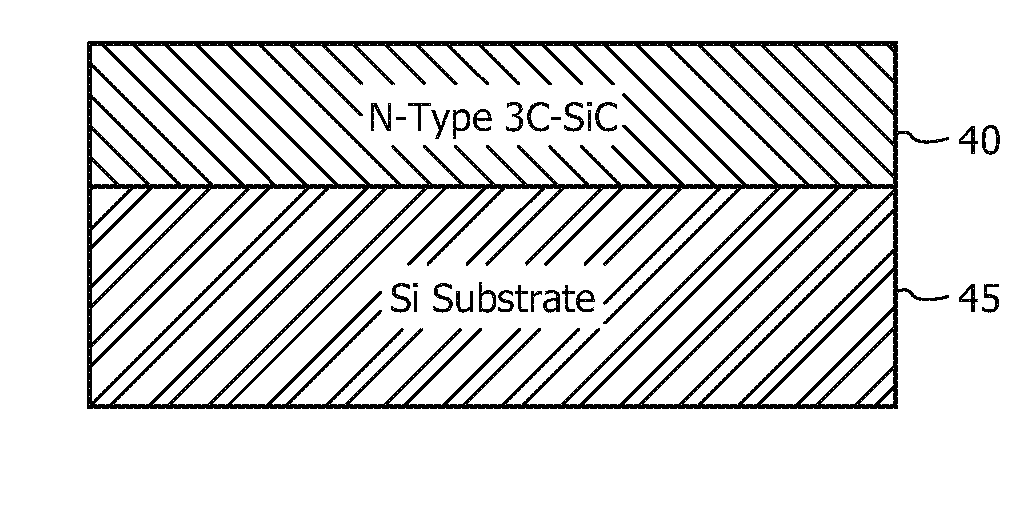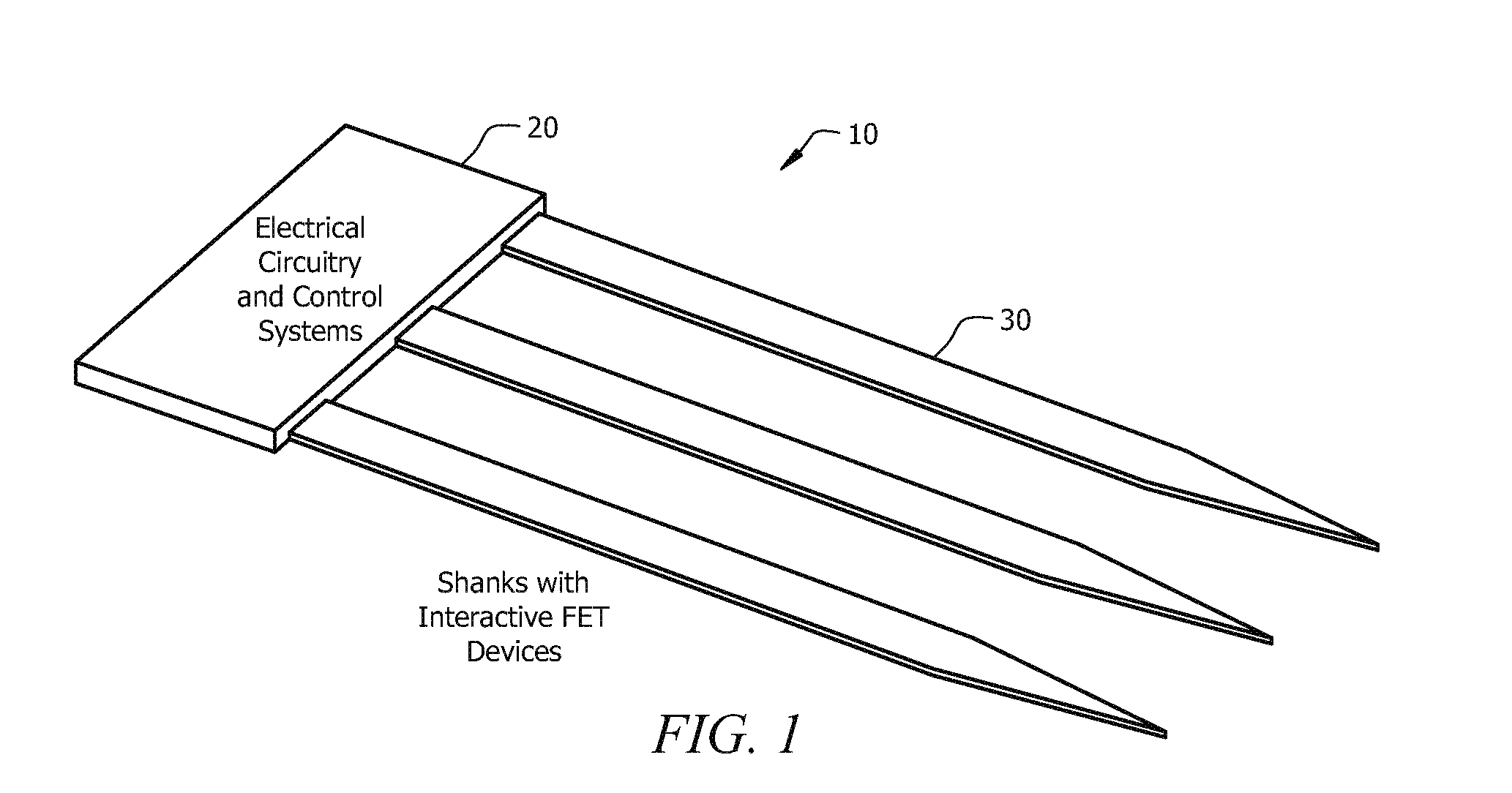Long-Term Implantable Silicon Carbide Neural Interface Device Using the Electrical Field Effect
a neural interface and silicon carbide technology, applied in the field of neuronal interface devices, can solve the problems of ineffective use of field effect devices over long periods of time, silicon and silicon oxide have been proven to be non-biocompatible for use as implantable neural interface devices, and the majority of semiconductors which could replace silicon are also known to be toxi
- Summary
- Abstract
- Description
- Claims
- Application Information
AI Technical Summary
Problems solved by technology
Method used
Image
Examples
Embodiment Construction
[0033]This present invention provides for a long term biocompatible neural implant utilizing field effect devices. Each component of the invention may be formed of many related materials.
[0034]FIG. 1 depicts an illustrative embodiment of the novel of the present invention, which is denoted as a whole by the reference numeral 10. The novel structure includes two (2) primary sections, as depicted in FIG. 1. The first section, labeled 20 in FIG. 1, contains the control and routing circuitry for the signals, the signal generation circuit, the signal processing circuit (amplifiers, filters, and analog to digital converters), the wireless communication system, and the power receiving or supply system. The power system may contain either a wireless power reception system or a rechargeable battery supply.
[0035]The second section 30 in FIG. 1 is implanted into the tissue and interacts directly within the neural environment. Although the depicted device includes three (3) planar “Michigan Pro...
PUM
 Login to view more
Login to view more Abstract
Description
Claims
Application Information
 Login to view more
Login to view more - R&D Engineer
- R&D Manager
- IP Professional
- Industry Leading Data Capabilities
- Powerful AI technology
- Patent DNA Extraction
Browse by: Latest US Patents, China's latest patents, Technical Efficacy Thesaurus, Application Domain, Technology Topic.
© 2024 PatSnap. All rights reserved.Legal|Privacy policy|Modern Slavery Act Transparency Statement|Sitemap



